
Q is a fictional character, as well as the name of a race, in Star Trek appearing in the Next Generation, Deep Space Nine, Voyager, Lower Decks, and Picard series and in related media. The most familiar Q is portrayed by John de Lancie. He is an extra-dimensional being of unknown origin who possesses immeasurable power over time, space, the laws of physics, and reality itself, being capable of altering it to his whim. Despite his vast knowledge and experience spanning untold eons, he is not above practical jokes for his own personal amusement, for a Machiavellian or manipulative purpose, or to prove a point. He is said to be almost completely omnipotent and he is continually evasive regarding his true motivations.
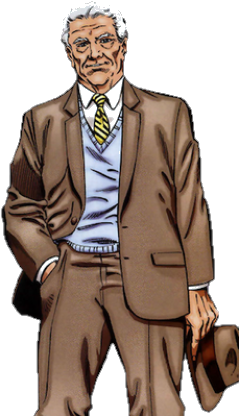
Benjamin Franklin Parker, usually referred to as Uncle Ben, is a fictional character appearing in American comic books published by Marvel Comics, usually in association with the superhero Spider-Man. He is the husband of May Parker and the paternal uncle and father figure of Peter Parker. After appearing Strange Tales #97, Uncle Ben made his first full appearance in Amazing Fantasy #15, and was created by writer Stan Lee and artist Steve Ditko. He was modeled after American founding father Benjamin Franklin.

David Gerrold is an American science fiction screenwriter and novelist. He wrote the script for the original Star Trek episode "The Trouble with Tribbles", created the Sleestak race on the TV series Land of the Lost, and wrote the novelette "The Martian Child", which won both Hugo and Nebula Awards, and was adapted into a 2007 film starring John Cusack.

Kang the Conqueror is a supervillain appearing in American comic books published by Marvel Comics. The character is most frequently depicted as an opponent of the Avengers and the Fantastic Four. A time-traveling entity, several alternate versions of Kang have appeared throughout Marvel Comics titles over the years, including his respective future and past heroic selves, Rama-Tut, Immortus, and Iron Lad.

Immortus is a fictional character appearing in American comic books published by Marvel Comics. He is the future self of Rama-Tut, Scarlet Centurion, Kang the Conqueror, and Iron Lad / Kid Immortus.

Adam Warlock is a fictional superhero appearing in American comic books published by Marvel Comics. The character would first appear in Fantastic Four #66–67 created by Stan Lee and Jack Kirby, originally named Him. The character would later be significantly developed by Roy Thomas and Jim Starlin. Debuting in the Silver Age of comic books, the character has appeared over several decades of Marvel publications, and starred in the titles Marvel Premiere and Strange Tales as well as five eponymous volumes and several related limited series.

Prince Caspian is a fictional character in The Chronicles of Narnia by C. S. Lewis. He is featured in three books in the series: Prince Caspian, The Voyage of the Dawn Treader, and The Silver Chair. He also appears at the end of The Last Battle.

The War Against the Chtorr is a series of science fiction novels by American writer David Gerrold. The Chtorr series was originally planned as a trilogy, but as the story became more intricate, Gerrold realized that three books would not be enough for him to tell the entire story. For a time, he was uncertain how many books there would be in the end but plans on seven. As of 2022, four books have been completed. As of 2017, a fifth and sixth were in the works, 24 years after the publication of the fourth book.
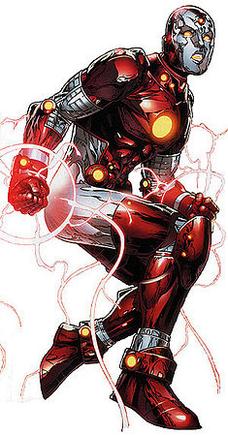
Iron Lad is a fictional superhero character appearing in American comic books published by Marvel Comics. He is an adolescent version of Kang the Conqueror, armed with a bio-metal suit that responds to mental commands. He is named after his ancestor of the same name.

Meet the Robinsons is a 2007 American computer-animated science-fiction comedy film produced by Walt Disney Animation Studios and released by Walt Disney Pictures. The 47th animated film produced by the studio, it is loosely based on the 1990 children's book A Day with Wilbur Robinson by William Joyce. The film was directed by Stephen J. Anderson and produced by Dorothy McKim, from a screenplay written by Anderson, Don Hall, Nathan Greno, Joe Mateo, Aurian Redson, Jon Bernstein, and Michelle Spitz. The film stars the voices of Daniel Hansen, Jordan Fry, Wesley Singerman, Angela Bassett, Tom Selleck, Harland Williams, Laurie Metcalf, Nicole Sullivan, Adam West, Ethan Sandler, Tom Kenny, and Anderson. Meet the Robinsons follows the interactions between Lewis, an orphaned 12-year-old inventor desperate to be adopted, and Wilbur Robinson, a young time-traveler who travels to the year 2037 for visit the family. The two must prevent a mysterious bowler-hatted man from changing Lewis' story, and, by proxy, the entire future.

The Time Traveler's Wife is the debut novel by American author Audrey Niffenegger, published in 2003. It is a love story about Henry, a man with a genetic disorder that causes him to time travel unpredictably, and about Clare, his wife, an artist who has to cope with his frequent absences. Niffenegger, who was frustrated with love when she began the novel, wrote the story as a metaphor for her failed relationships. The tale's central relationship came to Niffenegger suddenly and subsequently supplied the novel's title. The novel has been classified as both science fiction and romance.
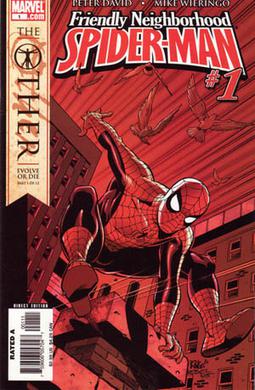
Friendly Neighborhood Spider-Man is a comic book series that was published by Marvel Comics. The title is derived from a trademark self-referential comment often made by Spider-Man. The first series began in October 2005 and was primarily written by Peter David. Friendly Neighborhood Spider-Man was canceled after issue #24, part 2 of J. Michael Straczynski and Joe Quesada's controversial "One More Day" storyline. Kurt Busiek has revealed that in 1995 he originally suggested "Friendly Neighborhood Spider-Man" as the title of the series which was eventually published as Untold Tales of Spider-Man.

Uncle Sam is a superhero appearing in American comic books published by DC Comics. Based on the national personification of the United States, Uncle Sam, the character first appeared in National Comics #1 and was created by Will Eisner.
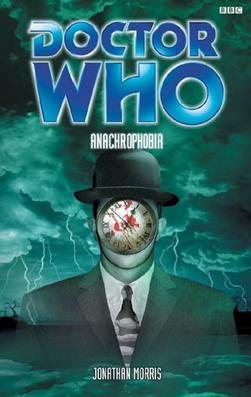
Anachrophobia is a BBC Books original novel written by Jonathan Morris and based on the long-running British science fiction television series Doctor Who. It features the Eighth Doctor, Fitz and Anji.
Sylvester Pemberton, alternately known as The Star-Spangled Kid and Skyman, is a superhero in the DC Comics universe. Sylvester first appeared in Star Spangled Comics #1 and was created by Jerry Siegel and Hal Sherman.

There Will Be Time is a science fiction novel by American writer Poul Anderson. It was published in 1972 in a hardback edition by Doubleday and in 1973 in a paperback edition by New American Library.

Dog Tags is a 2008 film written and directed by Damion Dietz and starring Paul Preiss and Bart Fletcher.

All-New X-Men was a comic book series published by Marvel Comics that debuted in November 2012, with the launch of Marvel NOW! The series centers on the five original X-Men, brought from the past to the present to confront their future counterparts. The series replaces Uncanny X-Men vol. 2 as the flagship book of the X-Men franchise.
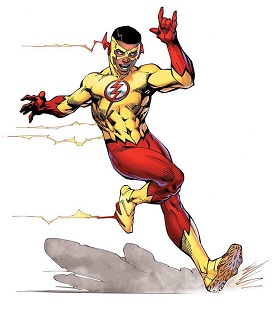
Wallace "Wally" West is a superhero appearing in American comic books published by DC Comics. Originally introduced as a new interpretation of Wally West, as part of DC's The New 52 relaunch, the comic DC Rebirth #1 later established that he is, in fact, a new character of the same name, being Wally's cousin, both named after their great-grandfather. To avoid confusion, the character was renamed in later comics as Wallace West.

















